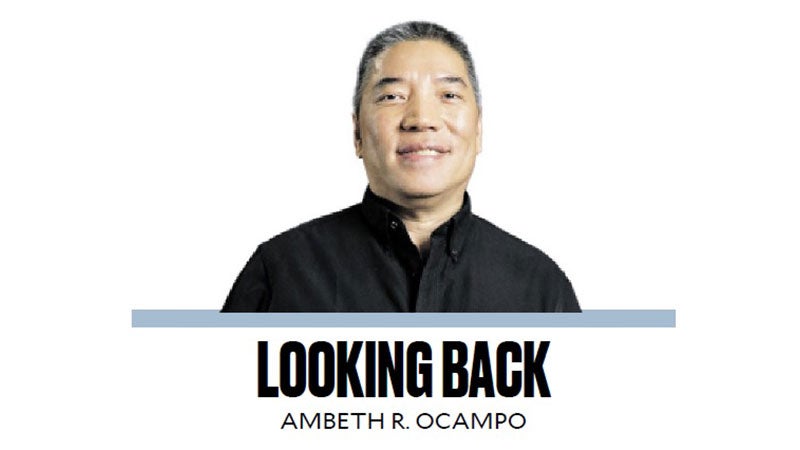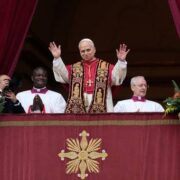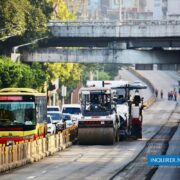Monuments men, documents men

Looking at photos of Intramuros taken shortly after the 1945 Battle for Manila, it is clear that many structures—or at least the shell or facade—remained. In retrospect, some of these could have been reconstructed to retain what remained of the once “Distinguished and Ever Loyal (Spanish) City.” Photographs of the devastation put into context much of the lamentation in Nick Joaquin’s “Portrait of the Artist as a Filipino.” Today, only San Agustin Church remains, largely intact, with a museum that houses the Luis Araneta collection of Philippine religious imagery salvaged from many churches and convents rebuilt postwar.
When survivors of the Battle for Manila tell their stories of terror and death from Feb. 3 to March 3, 1945, they cannot relate to the triumphant United States labeling of the event as the “Liberation of Manila.” The label rings hollow for those who lost loved ones, friends, and property when the Japanese did not declare Manila an open city. Instead, the enemy mounted a last stand, murdering non-combatants in the most dreadful ways. Eighty years since, Filipinos have forgiven but they should not forget.
Cultural casualties were just as great. I don’t agree with the 1998 estimate by the late art historian Santiago Pilar and current Historical Commission chair Regalado T. Jose that 90 percent of Filipino artworks were destroyed during the war. Not everything was in Intramuros or the National Museum. Surely, much outside the capital survived. Historical materials (books, documents, photographs) that are the lifeline for my work survived.
The 2014 film, “The Monuments Men,” is based on the story of a group of Allied soldiers tasked to track down and retrieve art treasures stolen by the Nazis during World War II. It was a race against time, because in the closing days of the war, it was rumored that the Nazis would take their loot with them, literally burning them as the curtain fell on Adolf Hitler and his Third Reich. It is not well-known that there were “Documents Men” in Manila tasked to save important library and archival material of the Philippines. As early as Feb. 20, 1945, while the Battle of Manila was still raging, Dr. Solon J. Buck, archivist of the US, wrote the following to Maj. Gen. John H. Hilldring in the war department:
“The present fighting in Manila endangers and probably already resulted in damage to historical and administrative records of the greatest importance both to this Government and the Government of the Philippine Government. This Government obviously has a special responsibility to do all that it can to salvage and give protection and first aid to what may survive.”
Buck then provided a survey of the materials: Spanish records of the 17th century, records of the US occupation (1898-1935), records of the Philippine Commonwealth (1935-1941), records of the Japanese administration and the “puppet government.” He also enclosed a copy of the main repositories and their locations, noting that these were mostly in Intramuros and south of the Pasig, where “the heaviest fighting and most of the fires have been raging.”
Maj. Arthur E. Kimberly, assigned to Australia, former chief of the Archives Repair and Preservation Division, was identified as a person who could salvage what was left. Buck explained that:
“Much can be done without special equipment in merely seeing to it that damaged and burned records are handled properly in connection with moving them to safer quarters where they will not be disturbed until more permanent rehabilitation work can be undertaken. It is the action taken in this critical first-aid period which determines whether or not there will be anything left to rehabilitate. He can also, from his first-hand knowledge of the work to be done, advise us as to the kind of a rehabilitation program that will be needed once military operations are concluded.”
Kimberly was reassigned to the counter-intelligence service and sent to Manila. He arrived on June 15, 1945, and was in contact with Dr. Gabriel Bernardo and professor H. Otley Beyer. The latter gave an assessment of the National Library property in the Legislative Building (the present National Museum Gallery of Art) that was done at the risk of unexploded shells and booby traps left by the Japanese. In addition, there was falling debris everywhere. Beyer stated that “the main collection of the National Library and Museum was thus almost wholly destroyed by the fire which had gutted the entire interior of the building.”
Fortunately, the more important items in the National Library collection were moved from the Legislative Building to the nearby Normal School. Much of the Normal School was destroyed, but rooms that contained the rare Filipiniana remained. According to Beyer:
“About 3,000 volumes (including nearly 80 percent of the Tabacalera Collection … part of the Pardo de Tavera and Zulueta collections; and, sentimentally, of most value to the Filipino people, the original manuscripts of Rizal’s Noli, Filibusterismo & Ultimo Adios constituting the more unique parts of the collection.”
All was not lost, we just need people to access and use these materials to write new histories.
—————-
Comments are welcome at aocampo@ateneo.edu
Ambeth is a Public Historian whose research covers 19th century Philippines: its art, culture, and the people who figure in the birth of the nation. Professor and former Chair, Department of History, Ateneo de Manila University, he writes a widely-read editorial page column for the Philippine Daily Inquirer, and has published over 30 books—the most recent being: Martial Law: Looking Back 15 (Anvil, 2021) and Yaman: History and Heritage in Philippine Money (Bangko Sentral ng Pilipinas, 2021).


















